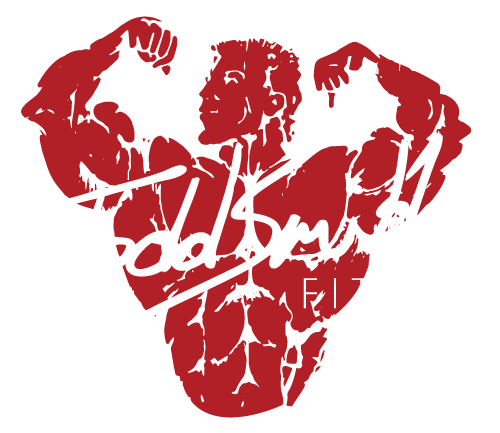What is the goal of your cardiovascular training program? Just like anything in life, you have to know where you are going, or you will end up going no where. For twenty-five years I have witnessed thousands of people completely wasting their time, spending endless hours doing cardio with no goal in mind. While the masses don’t have any idea of what their long term goals are, 99% don’t have any idea on how to have even one productive cardiovascular workout. If you do know exactly what you are striving for, and it involves running a 10 K, a marathon, participating in a bicycle race, or doing a triathlon, you can find better information elsewhere. If you are trying to lose body fat and stimulate your metabolic rate, you have found the right place!
Heart Rate Specific Training (Max Heart Rate = 220 – Age)
This equation was created in 1971, since then, there has been many individuals trying to complicate the formula, trying to come up with something better. In my opinion, 220 – Age multiplied by a percent of your intensity level is far and away the best measure for successful cardiovascular training. All the references in the training program portion of this site refer to percentages of maximum heart rate using the above formula.
Two Types of Cardiovascular Training: Steady State and Interval
Steady state training involves little or no variation in heart rate once the warm-up is complete. You simply maintain a steady heart rate in your target training zone for the specified amount of time. This type of training is best utilized once or twice a week to accelerate fat burning and optimize aerobic conditioning.
Interval training is an exercise technique that has led to the metamorphosis of thousands of my trainees over the years. Intervals refer to extreme effort (work interval) on a cardiovascular exercise followed by active recovery (meaning continuing the activity but at a much lower intensity, also called rest interval). There are a myriad of ways to create different interval training routines to assist you in achieving your goals (I have included the most effective I have ever utilized in the cardio training program portion of this site). While this training technique is great for stripping away fat, it is also develops your heart muscle and creates a stronger, more efficient pump.
Heart Rate Monitors
What are your chances of winning a dart match with a blindfold on? Yours odds of hitting a bulls-eye with a blindfold on are about the same as attempting to achieve a structured cardio workout without a heart rate monitor. You absolutely, positively, have to wear a heart rate monitor during every cardio workout. All the prescribed workout programs will be dictated by your heart rate. Dismiss all the information you see on the different cardio machines that tell you how many calories you burned during a specific workout. The only template that matters is following the specified programs that are directed exclusively by your heart rate.
What is the best type of cardiovascular machine for burning body fat?
There is not one type of cardio exercise that is the king of fat burning. Actually, you are best off switching up as much as possible. Once your body becomes accustomed to anything, it stops trying to adapt to the different stresses you place upon it and eventually stops changing. Whether it is spinning, stepping, running, or an elliptical trainer, your body craves unaccustomed stimulus to continue shedding body fat once the process has begun. I have counseled hundreds of runners who were frustrated because they had consistently run 3 – 5 miles a day for years without any significant change to their body weight or body composition. Most were amazed at their results once they began incorporating varying intensity levels or different modes of cardiovascular exercise. Moreover, doing the same form of exercise too much is guaranteed to produce tendonitis and joint damage.
Moderate Intensity versus High Intensity Cardio Training
In almost all fitness centers around the world the “Universal Training Target Heart Rate” poster is hanging on a wall displaying optimal training heart rate zones that pertain to the age of the trainee. The target heart rate poster reminds me a lot of the food pyramid posters that are still being utilized by dietitians and nutritionists. While there is definitely some truth to the antiquated charts, it is obvious by examining the health and fitness of the average American, that engaging in moderate exercise and eating six servings of grains daily will not allow you to achieve peak physical conditioning. The heart rate chart stresses that mildly elevating your heart rate is the best means of burning fat – that is a true statement. When you exercise at a low intensity level, your primary source of fuel is fat. So why do I believe that mixing in some real high intensity cardio, with moderate aerobic exercise is exponentially better at burning body fat than the workouts prescribed on the gym wall? The body has two primary sources of fuel to use during exercise – fat and glycogen. Glycogen is a form of stored sugar in the muscles and liver. During aerobic activity both glycogen and fat are used simultaneously to provide energy. At a low intensity level, a greater percentage of fuel comes from fat, but some of the energy is also supplied by glycogen. As the intensity of the exercise increases, the body gradually begins to burn more glycogen and less fat. At extreme levels of intensity (such as sprinting), glycogen is basically the only fuel your body utilizes. SO WHAT GIVES? With everything I just explained, it makes sense to only moderately elevate your heart rate to burn more fat. WRONG! High intensity training utilizes more muscle glycogen than body fat as a percentage. When you analyze the sheer number of fat and calories burned comparing high and low intensity cardio, high intensity cardio is much, much more effective at burning both fat and calories per unit of time than moderate intensity cardio. Here is an example to quantify my point: Two 40 year old men that weigh 185 pounds each are going to workout for 30 minutes. One walks and the other runs. The walker elevates his heart for the entire workout to about 120 – 125 beats per minute and burns 200 calories. Of these percentages, 70 percent came from fat, for a total of 140 calories used. The runner, utilizing an interval style training program, pushed himself hard for 4 minutes then recovered for 4 minutes, repeating the cycle for 30 minutes. During this workout, the runner achieves a peak heart rate of 160 beats per minute and burns a total of 370 calories, with 60 percent of them derived from fat (222 calories used). The higher intensity exercise increased the amount of fat burned by more than 50%. Moreover, when employing high intensity cardio your metabolic rate will be elevated for hours after your workout is completed.
What is the best time to train for optimal fat burning?
- In the morning on an empty stomach: After subjecting your body to a 10 to 12 hour fasting period (between dinner and the time you wake up in the morning) is unquestionably the best time to perform your cardio workout. During your fasting period, your body has utilized all its stored glycogen in your muscles and liver to fuel your body’s natural functions. Therefore, when you begin to exercise after the fast, your body immediately begins to break down stored body fat as energy. If you do your cardiovascular training after your day has begun, you end up spending 20 to 25 minutes burning through your stored glycogen before beginning to burn body fat. It is important to drink at least 24 ounces of water during your workout to maintain hydration.
- Immediately after your weight training workout: Following an intense weight training session, your body will have utilized most of the stored energy in your muscles and liver to fuel your body during your workout. Therefore, it is a great time to attack your fat stores with a cardiovascular workout.
- If your life style and schedule afford you the opportunity, jumping right out of bed and immediately getting your workout in is the best for fat burning, and metabolic enhancement. It is just as important to recognize that when your body is in an extremely glycogen diminished state (first thing in the morning) that it is no time to consistently execute high intensity cardio workouts. This is a time to take your heart rate to between 65% and 70% of your maximum and keep it there for 35 – 40 minutes. Attempting to push the limits of your aerobic training capacity with no carbohydrates in your system will lead to over-training or muscle wasting.
- High intensity interval training should be done no more than twice a week. Additionally, gut wrenching cardio should be done on a day off from weights, or immediately following a resistance training session (not legs).
Proper nutrition, resistance training, and cardiovascular conditioning, are the three key components necessary to achieve peak physical conditioning. Let me say that again, proper nutrition, resistance training, and cardiovascular conditioning, are the crucial elements to attaining your fitness goals. The reason I am emphasizing this point during the cardiovascular section of the site, is that 98% of trainers don’t fully grasp this concept. If you visit any fitness center around the world, you will witness the same people in gym, day in, and day out, slaving away, lifting weights, and sweating their asses off without ever seeing any results. So why is that? They fail to recognize the synergy that takes place when you properly apply all three crucial elements of fitness simultaneously. If you skip breakfast, embrace hunger, or fail to feed your body properly throughout the day, you will never see any results. I can’t tell you how many times I have left a gym, and seen one of the members who just finished a workout pulling into a fast food joint. I am totally amazed at what little value they place upon their own personal time. Not only will you not see any results, there is a great chance YOU WILL GET FATTER. All the exercise in the world will not let you overcome poor eating habits.





